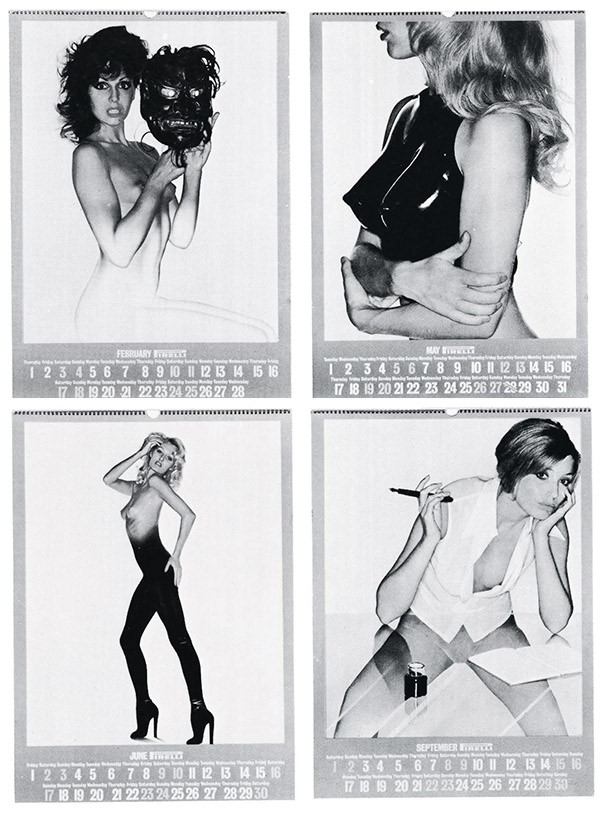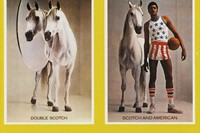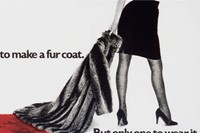In a world which can often be perceived as wallpapered and soundtracked by advertising, it is easy to concentrate on the pernicious corporate intent of the industry. Yet a new book, D&AD 50, published by Taschen...
In a world which can often be perceived as wallpapered and soundtracked by advertising, some still, some moving, some interactive, all pervasive, it is easy to concentrate on the pernicious corporate intent of the industry. Yet a new book from D&AD, the prestigious organisation founded in Britain half a century ago to represent and reward the creatives working in advertising and design, is hoping to remind people of the wit and style that characterised the adverts of the past, and the extraordinary technology and innovations that are shaping the industry today. To celebrate Taschen’s publication of the tome, we asked the book's editor Rod Stanley, former editor of Dazed & Confused, to nominate the campaigns that have excited and inspired him over the past fifty years.
Nova magazine (1965-75)
Art directed from its launch until 1969 by iconic photographer Harri Peccinotti, the politically radical and aesthetically beautiful Nova magazine revolutionized magazine design and forced everyone else to raise their game. As the venerable British film producer Lord David Puttnam, who selected it for his 1967 chapter, put it: “It made our ads, which we thought were wonderful, start to look a bit ordinary.”
Pirelli Calendar (1973)
The long-running Pirelli trade calendar started life back in 1964, and in what might be termed a ‘no brainer’ for success, has featured the world’s most famous models in varying degrees of undress shot by celebrated photographers ever since (except 1975–1983), from Sarah Moon and Bruce Weber to Richard Avedon and Nick Knight. The calendar featured here picked up a Yellow Pencil, with artist Allen Jones bringing glossy fetishism to the mainstream in sex-obsessed 1973.
White Horse (1979)
Simple but effective idea – ‘Scotch and American’, ‘Scotch on the Rocks’, and so on… This was a smart print ad for a whisky, which ended up running for just one year because the client didn’t understand it, pulling it in favour of anonymous ‘bottle and glass’ shots, and so dooming this particular horse to the glue factory.
‘Dumb Animals’ Greenpeace anti-fur campaign (1985)
David Bailey’s gory image of a fur coat leaving a bloody trail is a brilliant example of words and image coming together to create one incredibly powerful message: “It takes up to 40 dumb animals to make a fur coat. But only one to wear it.” Bailey turned it into a famous cinema commercial the following year, which picked up a Black Pencil award.
Dog Wearing Trainers, Reebok (1990)
Because it’s a dog wearing trainers.
"Dog Wearing Trainers, Reebok – Because it’s a dog wearing trainers"
Levi’s – Age Doesn’t Improve Everything (1992)
Selected by 1992 president and award-winning copywriter Tim Delaney, this was a witty campaign by BBH for Levi’s, nodding to the notion that their jeans would just get better as they got older – not always the case with their owners.
Se7en opening credits (1996)
A thoroughly nasty two-minute journey into the mind of a psychopathic killer. Forensic close-ups of skin being cut with razor blades, eerily scratched-in graphic titles, and Nine Inch Nails’ harrowing electro-goth all set the tone for the best film to ever feature Gwyneth Paltrow’s severed head in a box. Perfect.
Guess ‘Cheat’ commercial (1996)
1996 seems to have been a good year for design. Also picked in that year is this film noir-influenced slice of one-minute cinematic brilliance, with Harry Dean Stanton as the ice-cool private investigator, and the smoking-hot sex appeal of Juliette Lewis and former porn queen Traci Lords. Rrrrr.
“The Wilderness Downtown” (2011)
Video director Chris Milk and digital visionary Aaron Koblin’s interactive film collaboration for Arcade Fire was a powerful and poignant exploration of the individualising possibilities of modern technology.
D&AD 50 is out now, published by Taschen.



